Two coats of arms - two stories
Coat of arms
The Trogrlić family knows two historical coats of arms
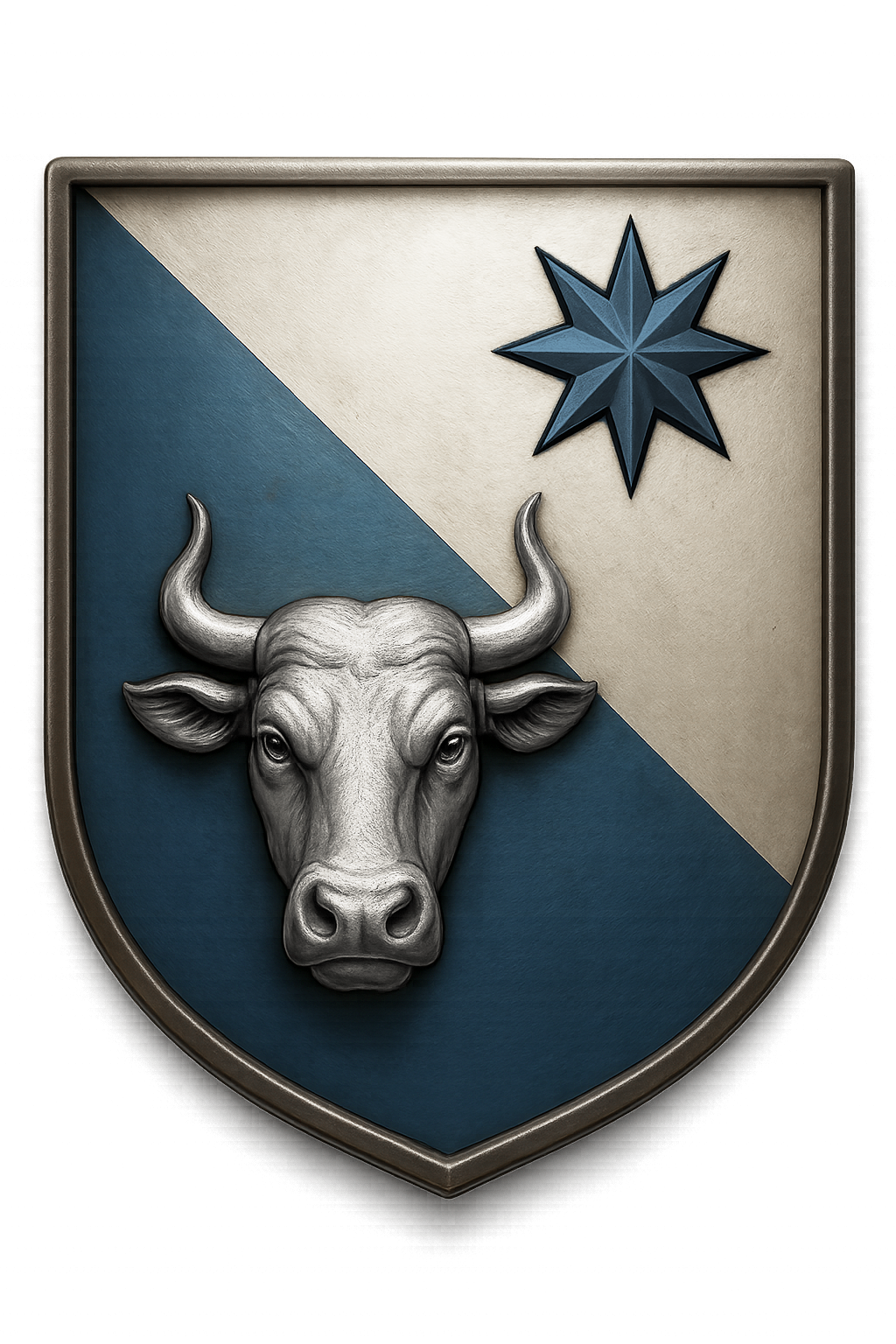
Der Ursprung des ersten Wappens
1. The coat of arms with the bull and the eight-pointed star – symbol of origin
Dieses Wappen ist vielleicht das älteste visuelle Zeugnis der Familie. Es erzählt die Geschichte von Nikola Trogrlić, dem ältesten namentlich überlieferten Vorfahren, der im Jahr 1686 mit seiner achtköpfigen Familie aus Studenci floh.
- In the upper right corner (heraldically, upper left) is an eight-pointed star on a silver field. It symbolizes the number of his family members as well as orientation, hope, and the memory of that time.
- The shield is divided diagonally, from northwest to southeast. This division symbolizes the border between Herzegovina and Dalmatia—two regions historically connected by the Trogrlić family.
- The grey colour of the upper (Herzegovinian) part symbolises the stone, the barrenness and harshness of the Northwest – a landscape that has been shaped as well as formed.
- Der untere Teil ist blau – das Blau des Meeres, des Südostens, also der dalmatinischen Seite. Es steht für Offenheit, Bewegung und Verbindung zur Welt.
- Im blauen Feld prangt ein Stierkopf, kraftvoll und wachsam. Der Stier verkörpert Mut, Großzügigkeit und Entschlossenheit, während seine Hörner Stärke und Charakter repräsentieren.
Dieses Wappen ist nicht nur heraldisches Symbol, sondern eine verdichtete Familiengeschichte – eine Bildsprache, die in Farben und Formen die Verbundenheit der Trogrlić mit Land, Herkunft und Mutsichtbar macht.
2. The coat of arms with the horse and the pleter – a sign of movement and demarcation
The second coat of arms probably appears later—possibly from the Returnee branch or the Vranjače line. It differs not only in its color scheme but also in its symbolism:
- It shows a horse surrounded by a Croatian pleter – the braided ornamental band that symbolizes identity, unity and tradition in Croatian culture.
- The horse is a significant creature in pre-Christian Croatian mythology. In ancient traditions, it represents the battle between good and evil, embodied in the sun god Stantevid, who conquers the forces of darkness on his winged horse “Krilas.”
- In neuerer Zeit steht das Pferd für Schnelligkeit, Fleiß, ständigen Aufbruch, Loyalität und ungezähmte Freiheit.
If the coat of arms with the bull is the root, then the coat of arms with the horse is the path. It represents those who stepped out of the shadows of history to create their own place – in Vranjače, in the modern era, in Europe.
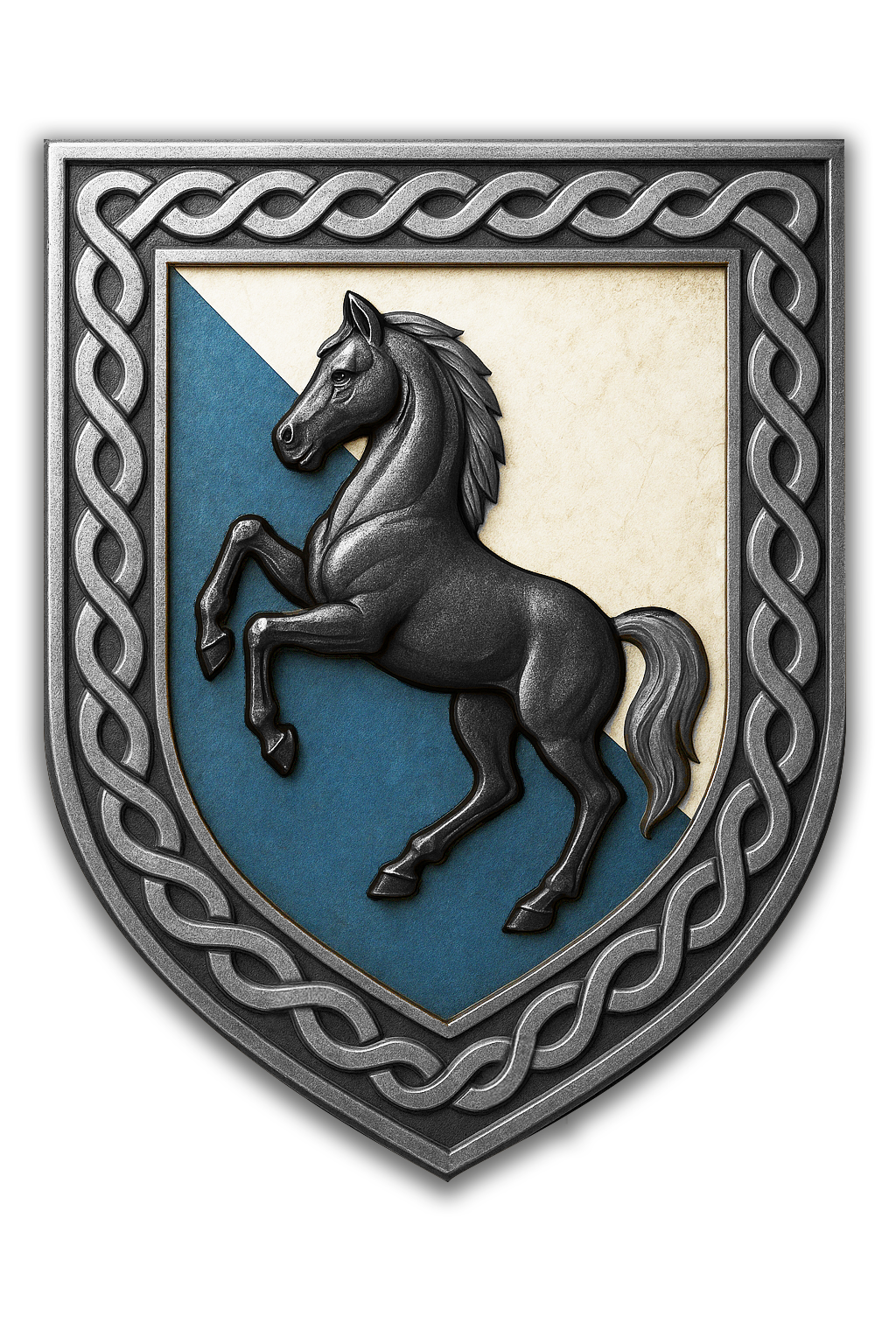
- May a non-noble family use a coat of arms?
Yes, even non-noble families in Southeastern Europe—especially in border regions such as Dalmatia or Herzegovina—were allowed to use their own coats of arms or heraldic symbols. The reasons for this were:
- Military service for Venice or the Ottoman Empire
- Landbesitz oder Grenzschutzfunktion
- Symbolic expression of clan identity
Coats of arms did not have to be granted through an official act of nobility. Especially in the 17th and 19th centuries, it was common for peasant families, merchants, or militiamen to visually represent their affiliation through their own coats of arms or insignia.
The Trogrlić family coats of arms—one with a bull and star, the other with a horse and pelter—are thus independent symbols of their local significance, not necessarily expressions of formal nobility.
Significance for family history
Die Familie Trogrlić ist ein Beispiel für eine tief verwurzelte kroatische Bauern- und Grenzschutzfamilie mit belegter Anwesenheit in Studenci seit mindestens Anfang des 18. Jahrhunderts.
Mit Verbindungen zu den osmanischen Steuerregistern, venezianischen Militärakten, einer klaren Namensherkunftund eigener Symbolik ist die Familie Trogrlić ein eindrucksvoller Bestandteil der kroatischen Grenzlandgeschichte.
Mehr zur Familienchronik
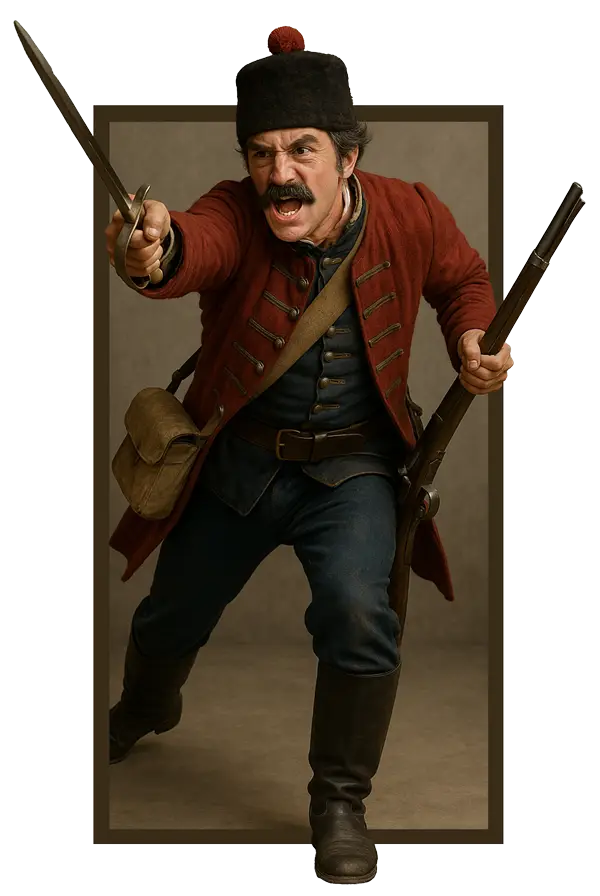
From border protection to homeland defense
Since the 18th century, bearers of the name Trogrlić have served their country – first as border guards under the Venetian flag, later at key moments in Croatian history.
One of them: Ivan Trogrlić, who died in 1991 in the explosion in the Barutana near Bjelovar.
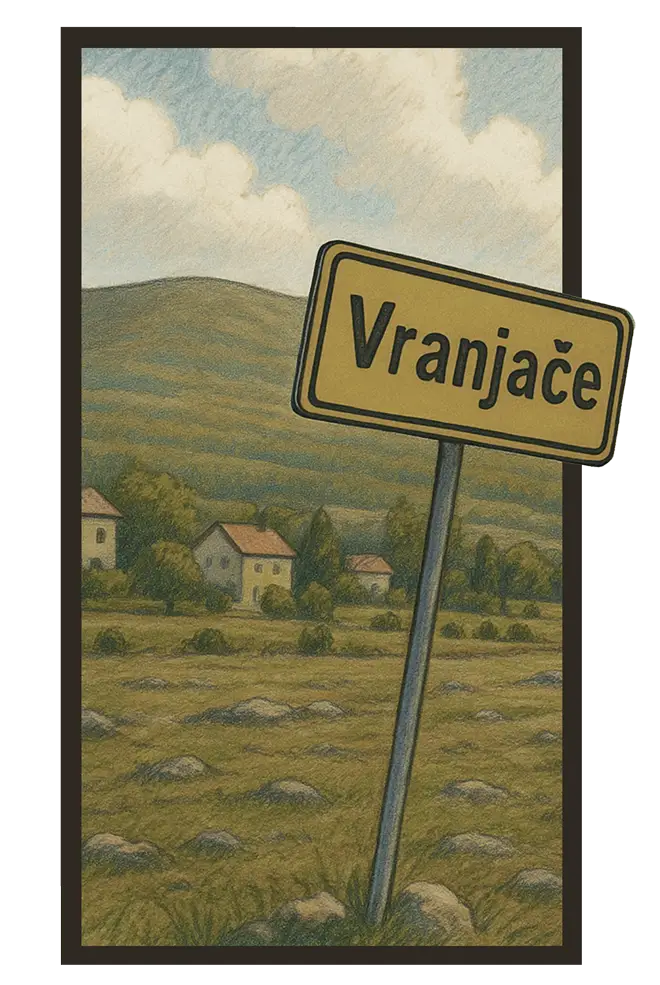
The "Eljdan" family tree
Ilija “Eljdan” Trogrlić was born around 1804 in Studenci and was one of the first members of his family to settle permanently in Vranjače.
His decision to settle the rugged but fertile highlands laid the foundation for several generations that would later shape life in Vranjače.
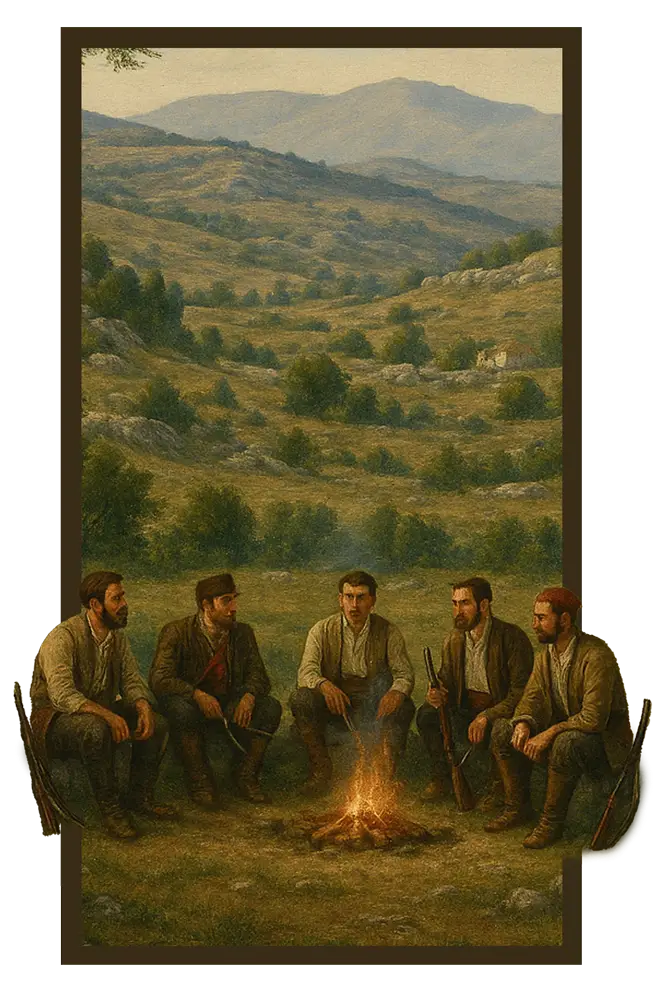
legend of the 5 brothers
The family tells of five Trogrlić brothers, whom even the famous Hajduk Andrija Šimić respected – he supposedly didn’t even dare approach their campfire.
Whether legend or truth, it reflects the pride, reputation, and attitude of our ancestors. Without titles. Without wealth. Only courage and unity.